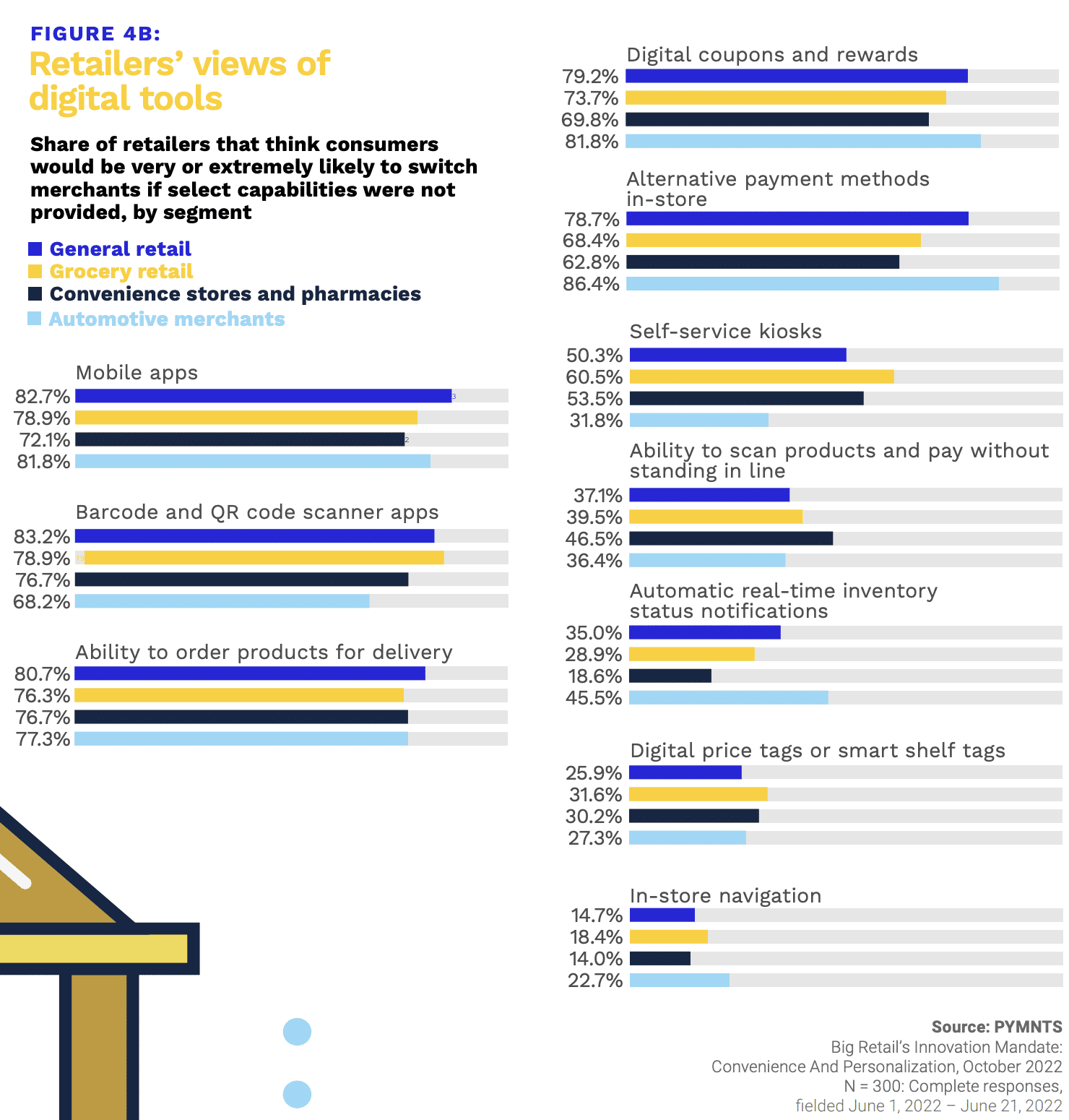
Grocers believe that delivery options are essential to securing lasting relationships with their customers.
By the Numbers
Research from PYMNTS’ study “Big Retail’s Innovation Mandate: Convenience and Personalization,” created in collaboration with ACI Worldwide, which drew from a survey of 300 U.S. and U.K. retailers, found that three-quarters of grocers think that consumers would be very or extremely likely to switch merchants if the ability to order products for delivery were not provided.

The Data in Action
Consequently, top grocers are competing to offer consumers the most accessible delivery experience in terms of both convenience and price.
Kroger, the nation’s largest pure-play grocer said Thursday (Dec. 1) in its third-quarter 2022 earnings report that total digital sales grew 10%, while delivery sales were up 34% year over year.
“We’re investing in digital growth initiatives, including expanding our Kroger delivery network in new and existing geographies,” CEO Rodney McMullen told analysts on a call. “We are also growing Boost, our one-of-a-kind membership program. This is the industry’s most affordable membership program, and it is foundational to growing our delivery service.”
The company rolled out its Boost membership program, which offers free delivery and fuel deals for $59/year (or $99 for free two-hour delivery), nationwide earlier this year, and the grocer has also been opening new automated eCommerce customer fulfillment centers (CFCs), built in partnership with Ocado Group, across the country.